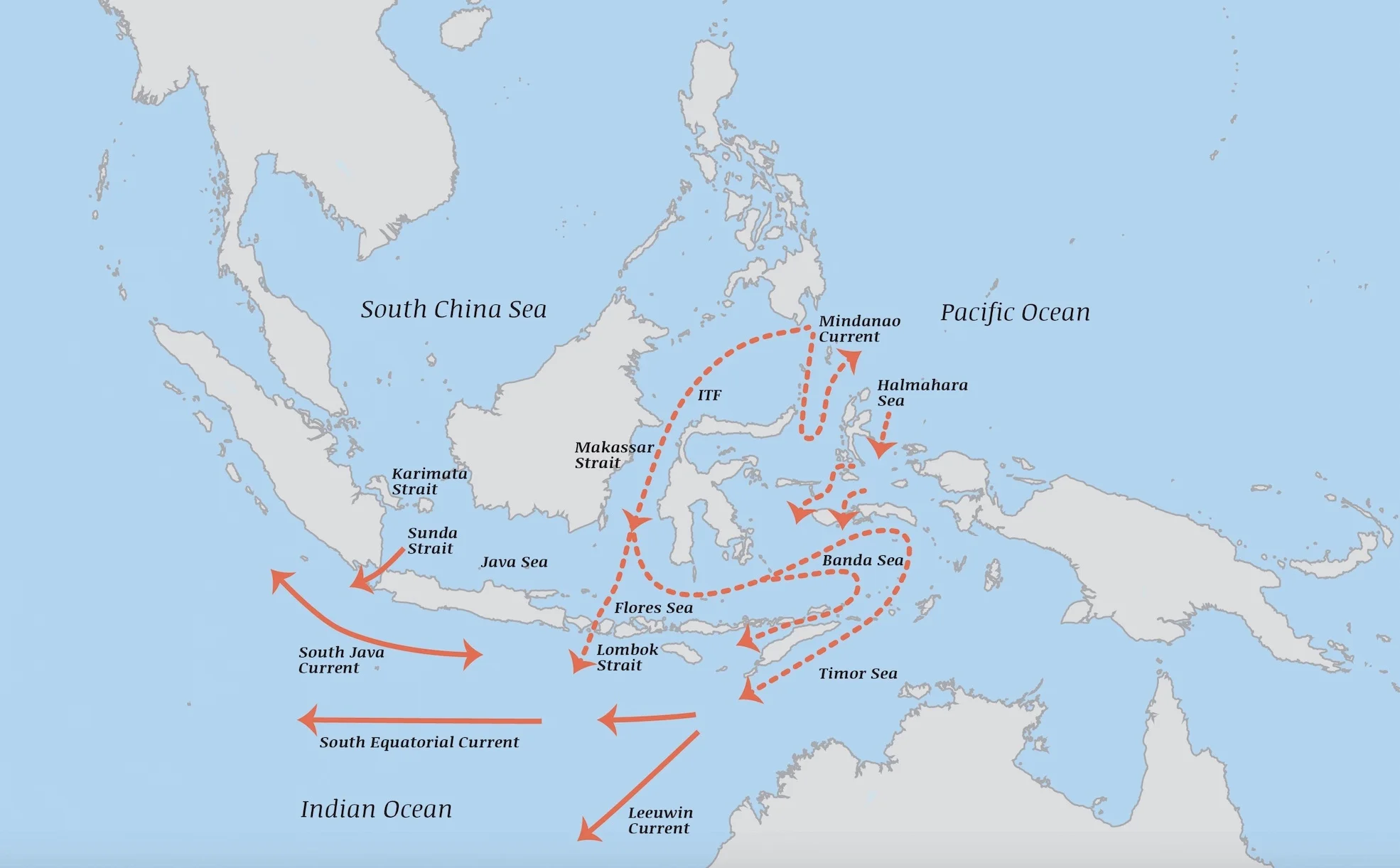The Indonesian Through Flow
The Indonesian throughflow (ITF) is an ocean current with importance for global climate since it provides a low-latitude pathway for a constant supply of warm water to move from the Pacific to the Indian Ocean and this serves as the upper branch of the global heat conveyor belt. As the earth spins ocean currents bring warm water from the Pacific ocean into equatorial regions of Asia. In the Pacific Ocean northeast of the Indonesian archipelago, as water is pushed up against Asia the sea level is twenty centimeters above average. In the Indian Ocean, because of similar forces acting in an opposite direction, the water is sucked away from Indonesia (and pushed up against Africa) therefore the sea level south of Indonesia is ten centimeters below average. This 30cm sealevel hight differential causes a north-to-south current through Indonesia.This water flows from the Pacific into the Indian Ocean through an intricate series of channels around the islands. As one of the greatest volume of water flowing on earth passes the channels and restrictions of Indonesia, the earth’s spin is actually slowed down!
Currents through the Lombok Strait & Nusa Penida
One of the main channels of the ITF flows between the islands of Borneo and Sulawesi directly south through the Makassar Strait and enters the Bali Sea. At this point the water, still trying the reach the Indian Ocean, meets a barrier: the Lesser Sunda Islands, sweeping in a tight chain from Bali to Timor. The only significant break in this chain is the Lombok Strait – between Bali and Lombok.
The Lombok Strait is unique for several reasons. One of them being that it creates what is known as the “Wallace Line” - named after the 19th century biologist who observed that terrestrial flora and fauna living to the east of this line is vastly different from that which lives to the west. In terms of the Lombok Strait’s importance to marine ecosystems, this strait is the primary channel through which the Pacific Ocean flows into the Indian Ocean via the Indonesian Through-Flow. Making it important for water exchange but also as a migration route between the two oceans for various marine organisms.
The Lombok Strait, though narrow and blocked in the south by the two-hundred-eighty meter deep Peninda sill, still offers a very direct path, and almost twenty-five percent of the shallow water flow through Indonesia passes here. This huge volume of water flows through the channel which is only 30km wide at it’s narrowest point (between Banko Banko, Lombok & Batu Abah, Nusa Penida). Nusa Penida and Lembongan create an obstruction at the bottom end of the Lombok Strait causing the currents to split and eddy. Marine larvae & plankton from all over the Pacific are transported in the currents then collect around the islands. Almost every marine species in the pacific has the potential to be transported and settled around the eddies of Penida.
The Nusa islands are fortunate in their position to also receive larval input from Indian Ocean species. A 3500m deep basin sits just south of the island. Seasonal upwellings in this basin create phytoplankton blooms which give a healthy base to the entire food chain.
Help support coral reef restoration
Blue Corner Marine Research is currently working on a coral reef restoration project on Mangrove Reef in the Nusa Islands - this reef is one of the most biodiverse in the region, however has suffered damage from anchor damage and mass tourism. Donate to this restoration project to help restore this coral reef:



